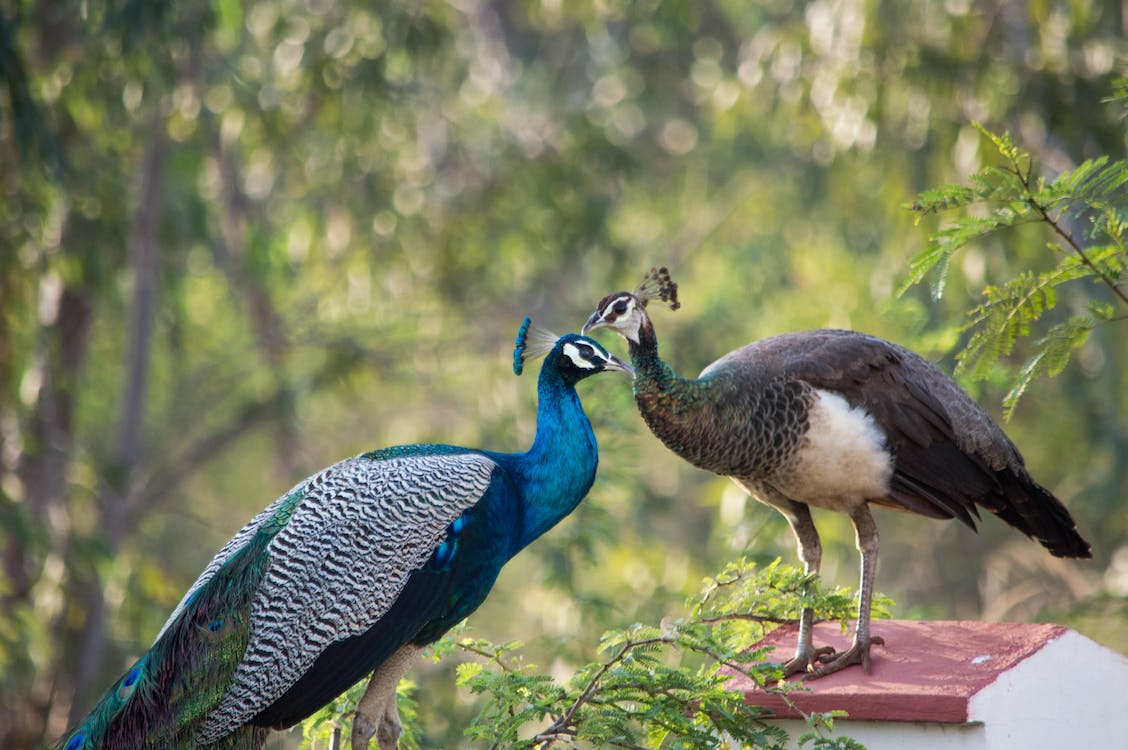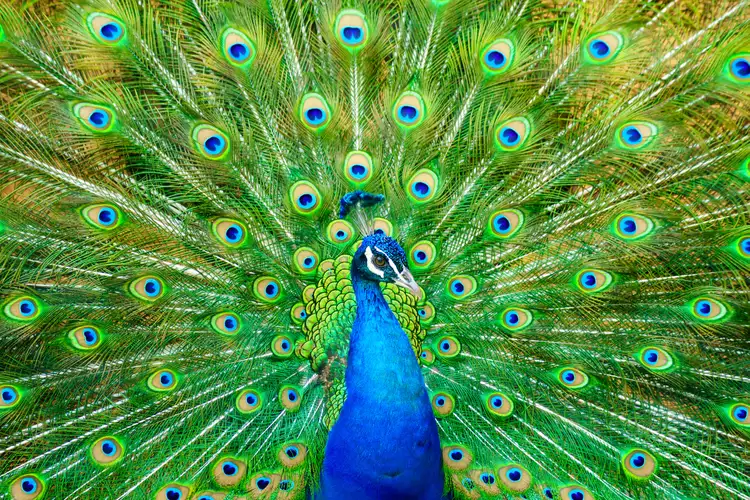By Fanis Michalakis,
In many pictures of birds that we see online, we see birds with many dazzling colors, detailed feathers, and stunning appearances. One of the best examples is the peacock. The real name of the bird is “peafowl”, with “peacock” for the males, and “peahen” used for females. However, the males receive all the attention, due to their beautiful image. Looking at the peacock tail, we can see patterns that are carefully placed, creating an appealing image. We can see that the feathers open to create a fan shape, with symmetry in the feathers with “eyes” and the ones without them. An important note is that when the peacock opens its tail, the feathers are placed in position by muscles that can also control their movements, making the tail vibrate and produce a humming sound. Apart from the tail, the peacock has crown feathers and an iridescent blue neck. It is a bird that we chose to make part of art and culture, appearing as early as ancient Greece as the sacred animal of Hera, and appearing in many paintings over the years as a symbol of beauty. However, apart from art, the peacock has attracted the attention of biologists throughout the years, trying to explain its appearance.

One key element of evolution is the natural selection of species, proposed by Charles Darwin, as a force that leads to an increase in the number of individuals with favorable traits. This promotes those characteristics, leading to an eventual change in the population, and the birth of a new species. However, Darwin proposed the theory of sexual selection to explain the looks of the peacock. According to the theory, the peahens are more attracted to bigger and more complex tails, promoting them to the next generation through mating with peacocks that have those tails, leading to a vicious cycle. Ronald Fisher, a mathematical biologist supported the theory that this cycle would eventually lead to sexually dimorphic phenotypic traits (meaning that males and females would look different), and perhaps an exaggeration of a trait, which is called Fisherian runaway. One interesting correlation between the two above theories is that they attempt to find the reason behind the creation of dimorphism, but they both avoid discussing the forces working against the development of this trait. Because of the size and complexity of the tail, the peacock requires a lot of energy to create and maintain it, especially considering that they shed it annually, they make it harder to fly and escape from predators. So, why would this feature persevere?
One theory is that females prefer males with eccentric characteristics because this means that they possess “good genes”, otherwise they would not be able to maintain their image. Another problem with sexual selection is that it is hard to start the cycle. For the cycle to begin, we would need two genes, one for the males to create the trait and another gene for the females to express a preference for the trait. The best scenario as a solution to this problem is that the preference gene was first created and stayed dormant since there was no matching trait, and then one day a male spontaneously gained the trait gene. The two individuals matched and started the cycle. Still, this scenario includes many random events, so the question is yet to be completely answered.

Throughout the years, there have been many hypotheses in the effort to understand the reasons behind the peacock’s plumage, and with every research more questions arise. Despite the many observations made, we still lack the necessary pieces to solve the puzzle. However, one thing is certain. The peacock does attract attention, and not just of the peahen.
References
- CITESEERX. Available here
- Fisherian Runaway (2023) Wikipedia. Available here
- Peafowl (2023) Wikipedia. Available here




